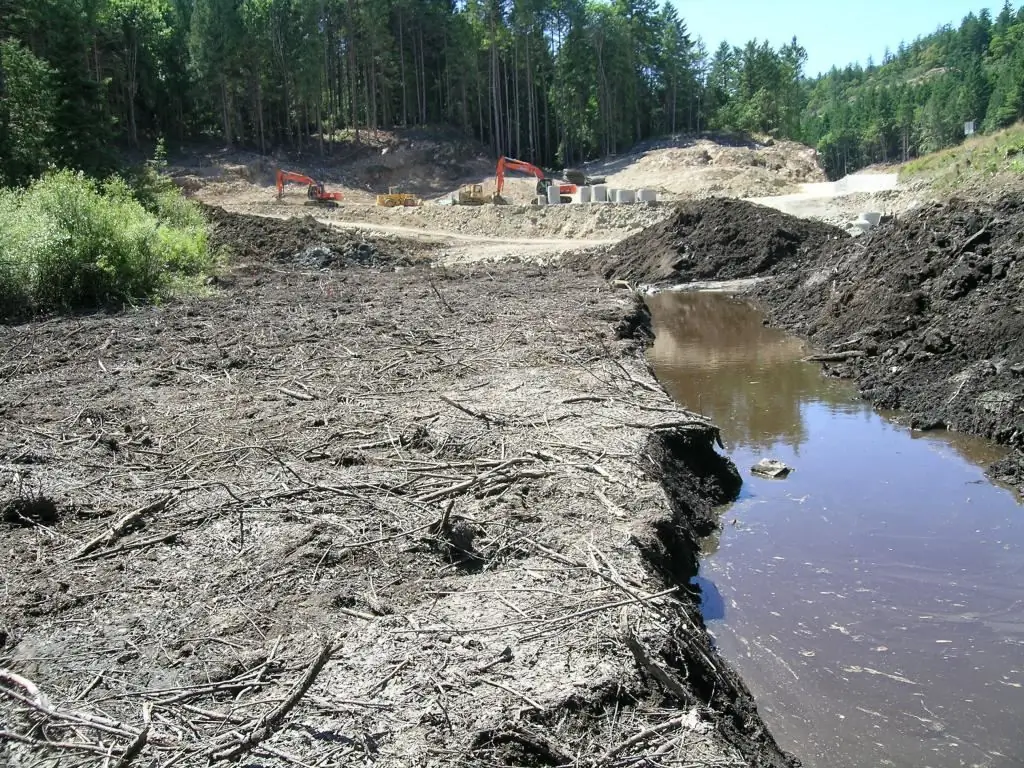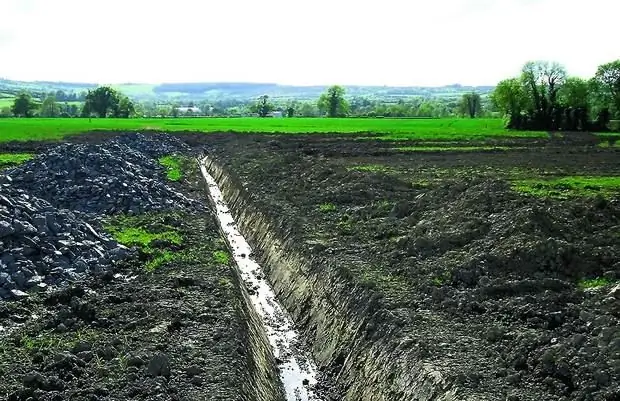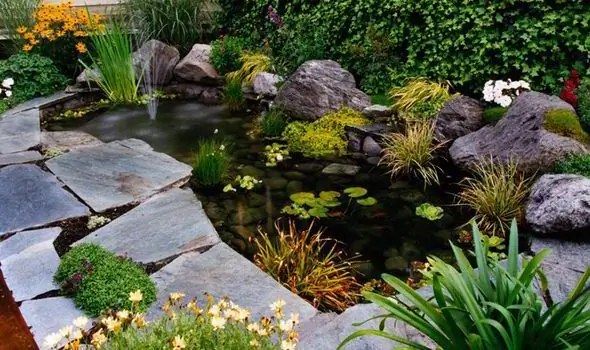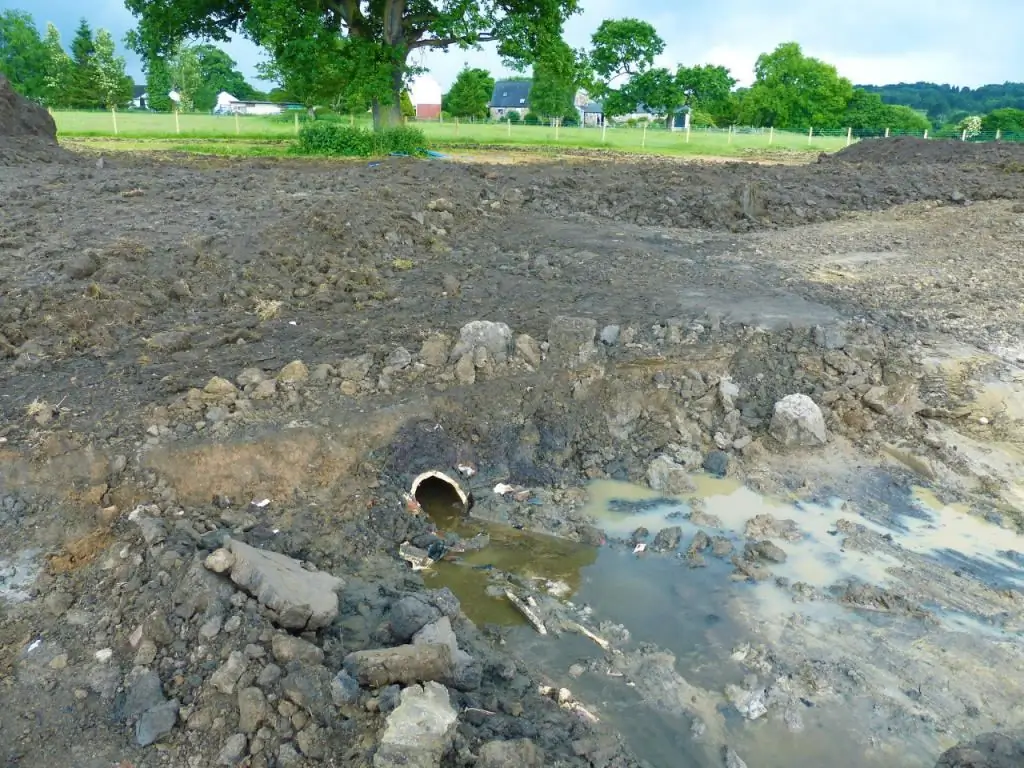If the purchased suburban area is located on a peat bog, its owners will have to perform a number of works to improve the soil on it. The land in such places, unfortunately, cannot be considered too suitable for growing various kinds of crops. The soil in peatlands contains very little oxygen, which replaces methane. Also, such areas in spring and autumn turn into a real swamp due to flooding. How to drain the peat allotment if necessary - we will talk about this later in the article.
Ways to improve
In some cases, it is possible to solve the problem of swampiness of the allotment in a very simple way - by adding a certain amount of land brought from outside. But, of course, it is possible to use such a technique only when water is collected at the site due to the fact that it is located in a lowland and has a relatively small size. In all other cases, water has to be drained from the dressing room.

The answer to the question of how to drain the site, in this case, can be two technologies:
- superficial;
- with piping.
The first way is considered the easiest. Open drainage in a wetland with your own hands will be absolutely easy to do. But with the use of pipes, a more efficient drainage system can be arranged.
Diversion with ditches
This method is a good answer to the question of how to drain a swamp in a peat bog. The advantage of this method, among other things, is that when it is used, the owners will not have to spend a penny to drain water from the site. For drainage, in this case, a ditch about 50 cm wide and at least 1 m deep is dug along the edge of the allotment on the side that is located below the others.
If there is a slightly higher and swampy neighboring area nearby, a trench should be made on the border with it. This will block access to water from someone else's allotment.
In the future, in the process of performing various kinds of work on the site, the drainage channels will need to be filled with all kinds of construction and garden waste. It can be, for example, stones, broken bricks, weeds, etc.
Benefits of using pipes
The open method of diverting water through ditches is simple and cheap. However, this technique is used only in not very wetlands. In all other cases, it is advisable to equip allotments with full-fledged drainage systems using perforated pipes.

The answer to the question of how to drain the swamp in the garden, this technology in most casesis just perfect. The advantages of such outlet networks, among other things, include:
- more uniform and faster regulation of water balance in the soil;
- possibility to cover absolutely the entire area of the site.
When using such a system, the drainage sleeves run underground. Due to this, the usable area of the site is not reduced. Beds when growing garden crops on such an allotment can be made, including directly above the pipes.
How to set up a closed system
In this case, ditches are also dug on the site to drain water. In this case, the main trench is located along the perimeter of the allotment. Next, ditches are dug over the area of \u200b\u200bthe site.

At the bottom of dug trenches when using this method of drainage, a waterproofing agent is laid - a thick film or roofing material. Next, a layer of medium-sized rubble or pebbles is poured into the ditches. Perforated pipes are laid on top. In order to prevent the holes of such drainage lines from becoming clogged in the future, they are pre-wrapped with geotextiles.
Connect pipes at the convergence or intersection of ditches using tees or elbow fittings. Above these network elements, manholes made of plastic or concrete are necessarily equipped. If there are such additions in the system, it will be very easy to eliminate blockages that appear in the lines and clean them from accumulating sludge.
What you need to know
Of course, in order for the water to leave thethe subsequent section along the pipes by gravity, they need to be laid under a slope. Otherwise, it will not work to dry the dressing. Unfortunately, it is impossible to mount the drainage network lines under too great a slope. In this case, the pipes will subsequently silt up very quickly. It is also not worth doing a very small slope of the drainage channels. Otherwise, the system will subsequently work inefficiently.

In most cases, when arranging garden sewage networks, pipes are laid at an angle of 0.5 to 3 cm per linear meter. You should not deviate from these parameters up or down.
Receiving well
How to drain the area with pipes, we thus found out. But where can you put the excess water itself? You can drain it from the site, if it is located on the outskirts, simply beyond its aisles - into some kind of ravine, stream or pond. But if neighboring plots are located next to the swampy garden, a special well will have to be equipped to receive wastewater. If desired, such a container can also be built on a site located on the outskirts. After all, the water collected during drainage can later be used to irrigate the same beds.
Receiving wells are being built at the lowest point of the suburban area using the following technology:
- a hole is dug in the ground, into which the main drainage trench is inserted;
- bottom and walls of the pit are concreted with a layer of 5-10 cm.
Of course, holes for pipe planting should be provided in the concrete structures of the well during pouring.
Instead of a concrete structure, a plastic one can also be used when arranging the drainage system. It will not be difficult to purchase such a container from companies specializing in the supply of equipment for drain systems.

Receiving Pond
In most cases, the owners of vegetable gardens on peat bogs, of course, equip a well to drain water. But instead of it, if desired, you can make an artificial reservoir on the site - a beautiful decorative pond. In this case, a foundation pit is also dug in the ground, but wider.
The bottom and walls of the pit for arrangement on the site of an artificial reservoir are thoroughly cleaned of roots and stones. Further, the pit is lined with a durable waterproofing material - best of all with a thick film. Through the holes in the film, drainage pipes are led into the pond. You can disguise them at the bottom, for example, with beautiful stones or some kind of aquatic plants. In summer, it will be possible to release even unpretentious fish from the aquarium into this reservoir. Showy swamp plants are usually planted around the pond.
Main difficulty
In principle, as you can see, the answer to the question of how to drain the area from water with your own hands is quite simple. The most difficult task in this case is likely to be the physically demanding excavation work. After all, there are actually a lot of ditches on the site. However, in order for such a system to work as efficiently as possible, it is, of course, necessary to lay trenches on the site, first of all, in the right places.
It is best, of course, to entrust the project of arranging the drainage system of the wetland allotment to a specialist. A professional will be able to take into account all the nuances of the relief of a particular area. However, projects of drainage systems in suburban areas are, unfortunately, quite expensive. If there is no money to order a pipe laying plan, you can try to develop it yourself. In order to find out where it is best to dig drainage trenches, you will have to wait for the first heavy rain. By observing the streams flowing down the ground, it will be possible to accurately determine the optimal location of the trenches.

How to drain a swamp: using moisture-loving plants
Of course, in most cases, it is possible to drain a wetland only in cardinal ways - by arranging ditches or laying pipes. But as an additional measure in such a garden, it is also worth planting plants that draw a lot of water from the ground. It can be, for example, willows, birches or maples. Such trees, since they have a significant height, are planted, of course, usually on the north side of the allotment. Otherwise, in the future, they will block plantings, which, in turn, can easily lead to a decrease in the yield of horticultural and horticultural crops.
The high level of groundwater in the area can also be reduced with the help of shrubs. For example, a lot of water from the soil can be taken by hawthorn, wild rose, vesicle, irga. Such plants can be planted around the perimeter of the site to create a hedge.
Methane in soil
Of course, after draining by open drainage or by laying pipes, the land on the site will in any case become more suitable for growing garden and horticultural crops in terms of composition. But in order to further improve its quality, site owners will have to:
- scatter a mixture of clay and sand over the area with a thin layer;
- carefully dig the allotment using a shovel or, preferably, a motor cultivator.
Of course, a very good solution would be to scatter around the site, in addition to clay and sand, before digging also manure mixed with sawdust. This will not only improve the structure of the soil, but also make it more fertile and nutritious. The addition of various kinds of mineral fertilizers to the soil will also make it more suitable for growing garden and garden plants.

Pros of peatlands
So, we figured out how to drain the area from water with our own hands and improve the soil on it. Such an allotment can, of course, cause a lot of trouble for its owner. However, peatlands, in comparison with other types of soils, have their own advantages. For example, in such areas, plants usually tolerate winters much better. The earth on peat bogs is frozen slowly, in thin layers. At the same time, the soil on such allotments never freezes too deep. So on such a plot, after it is drained, you can plant, for example, heat-loving roses, apricots, etc.






